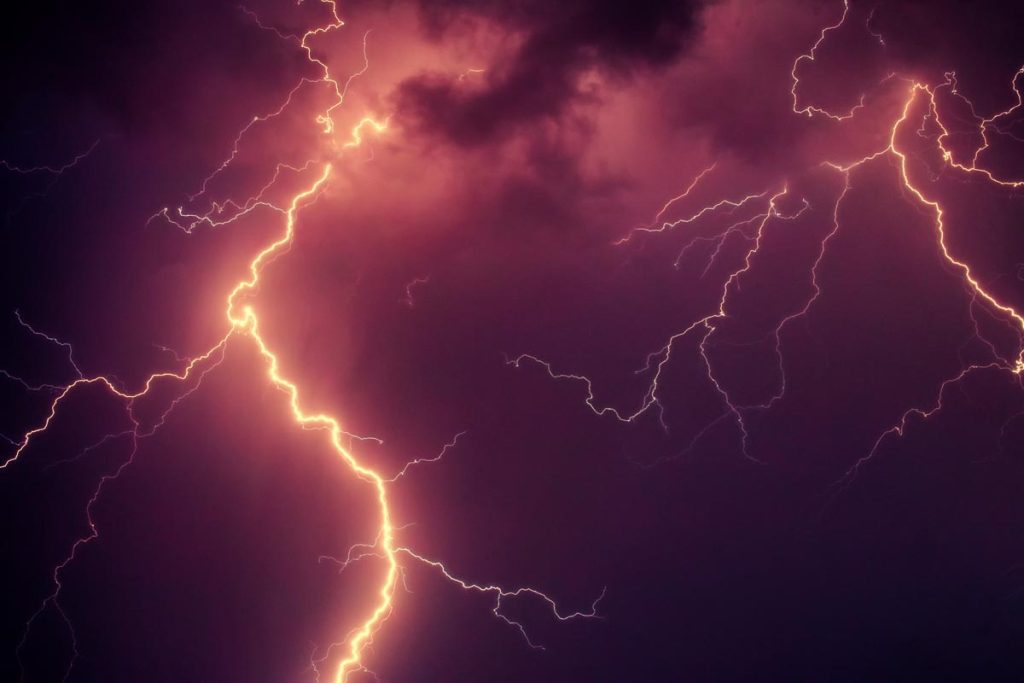Lightning strikes the ground worldwide more than 8 million times per day. The odds of being struck by lightning are relatively low, however, it is important to know the proper precautions to take, because being struck can have severe consequences. Between 2003 and 2012, lightning strikes caused an average of 35 deaths per year.
Lightning most often strikes people who work outdoors or are often engaged in outdoor activities. About 32% of lightning strike injuries occur indoors.
Before lightning strikes, check the weather forecast before going outdoors. If the forecast calls for lightning, postpone your outdoor activity.
What To Do When Lightning Strikes
- If outside, seek refuge in a vehicle or building
- If outside and away from a vehicle or a building, stay away from bodies of water and tall structures such as trees
- If you are in an open area, crouch down in a ball-like position, with your feet and knees together, your head tucked, and your hands over your ears
- If you are in a group during a thunderstorm, separate from each other to reduce the number of injuries if lightning should strike
- If inside, avoid baths, showers, and washing dishes
- Avoid using landline phones, TVs, and other appliances that conduct electricity
- Avoid windows, doors, porches, and concrete
- Once it’s over, stay inside for thirty minutes after last see lightning or hear thunder
First Aid
In the event of a lightning injury,
- Call 911 immediately, giving directions to your location. It is safe to use cell phones during a lightning storm
- If necessary, move the victim to a safer location
- Check to see if the victim has suffered a heart attack. Check to see if they are breathing and if they have a heartbeat
- If the victim is not breathing, begin mouth-to-mouth resuscitation
- If the victim does not have a pulse, begin CPR immediately and continue until help arrives
It is important to remember to bring your pets inside during a storm. Additionally, remove any metal collars and leashes during a storm and replace with plastic, since metal is a conductor of electricity.
For more information on lightning injuries, visit the CDC’s webpage on lightning.

